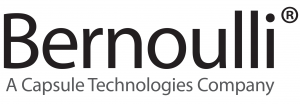
Close up of supporting hands
Technology, Workflow and Outcomes: Finding Balance for Nurses
by Jessica Lake, BSN, BS, RN
In the Beginning…
When I became a nurse, my preceptor told me that what often matters most to patients and their families has little to do with clinical care. From the patient’s perspective, even the best hospitals can be impersonal, intimidating and demoralizing. So helping him or her feel like they are seen, heard and valued can do things for the spirit that no treatment plan can. Bringing an extra blanket or engaging in small talk isn’t high-tech, but it works.
However, several years into my career, I began to notice that these little moments were being consumed by other tasks. I wondered how I was actually spending my time each shift—and it soon became apparent that most of my time was spent interfacing with technology in ways that were not helping me be a better caregiver to my patients.
The Burdens of Tech Overload
I am not alone. Today, many nurses are resigned to the fact that direct patient care makes up a small percentage of their day. A much larger slice of our shift is exclusively dedicated to interfacing with technology ostensibly designed to help us provide better patient care.
Portable technology helped. It gave us mobility and immediate access to any department. It also provided satisfaction to patients when you could make a call on their behalf, right in front of them.
However, the stream of prompts, signals and alerts quickly overwhelmed without actually making my job easier or patient safer. It seemed that every new device implemented was capable of sending alarms to our phones—bed exit alarms, pulse oximetry alarms, physiologic monitoring alarms, blood pressure alarms, IV pump alarms and more.
Most of these alarms—85% to 95%—required no clinical intervention, but since the alarm was received, we had to go to the patients’ room and address the issue. Perform enough of these wild goose chases and alarm fatigue is inevitable, increasing the chances that alarm thresholds are arbitrarily adjusted or shut off completely.
Medical technology is supposed to be a clinical collaborator, yet for many nurses it’s yet another barrier to human-centered, outcomes-based care. There is a better way—and it’s up to nurses to forge that path.
Alarm Management is a Team Sport
Achieving measurable progress in clinical alarm management requires that hospitals identify and support internal champions, including nurses, respiratory therapists, biomedical engineers, and information technology (IT) staff. These interdisciplinary experts must come together to assess the current state of the clinical alarm environment both in their units and in the facility as a whole. Such an effort includes establishing baseline alarm quantities by department, patient cohort, and time of day or night and reviewing current alarm settings.
Once the root causes of alarm proliferation have been identified, hospitals can begin developing standards and strategies for mitigating the problem. For example, should hospital leadership focus on reducing the total number of alarms or reducing the average number of alarms per bed?
Of course, clinical alarm management consists of more than just a reduction in device-generated alarms. It’s also about providing clinical teams a contextual, real-time view of a patient’s condition.
By applying the advanced analytics of clinical surveillance to data from multiple sources, including real-time physiological data from monitoring devices and retrospective information from the EHR, clinicians can deploy an effective tool that proactively interprets often subtle physiological trends in patients to facilitate early interventions.
Rather than responding to alarms from individual devices, which more often than not, signify nothing, clinical surveillance alerts provide a genuine “tap on the shoulder” that clinical intervention is required.
These smart alerts, for example, provide a real-time perspective for clinicians, including:
- Trending alarms. Patient alarm limits expand or contract on individual devices.
- Consecutive alarms. Patterns of consistent alarms are detected over a clinician-defined period of time.
- Combinatorial alarms. Multiple parameters from different devices occur simultaneously, which may together indicate a degraded patient condition.
The Path Forward
The scope of alarm management reaches beyond the mere reduction of spurious alarms. It is a gateway to more seamless care and a path for hospitals to leverage hard data to make continuous improvements to its care and response processes.
Basic alarm reduction will not optimize clinical workflow or improve patient outcomes. Health systems need to view technology as collaborators to facilitate proactive patient care and an opportunity for nurses to practice as nurses again.
About the Author:
 Jessica Lake, BSN, BS, RN is a Sr. Clinical Solutions Manager at Bernoulli, where she focuses on customer acquisition, implementation design and clinical process consultation, as well as assisting with defining requirements for services proposals, customer testing, training and go-live support.
Jessica Lake, BSN, BS, RN is a Sr. Clinical Solutions Manager at Bernoulli, where she focuses on customer acquisition, implementation design and clinical process consultation, as well as assisting with defining requirements for services proposals, customer testing, training and go-live support.
Jessica has 10-plus years of clinical experience as a Registered Nurse at several acute care hospitals in the Delaware Valley area including Kennedy Healthcare, Cooper University Hospital and Lourdes Medical Center.
In addition to a strong clinical background, Jessica has worked for a variety of healthcare vendors focused on communication and workflow improvement for more than 13 years. Prior to joining Bernoulli her roles included Clinical Solutions Consultant, Clinical Applications Specialist, and Clinical Applications Specialist Manager at Vocera Communications and Clinical Product Marketing Manager at PerfectServe.
Jessica is currently a member of AONE and ANIA. View Jessica’s profile on Linkedin.


